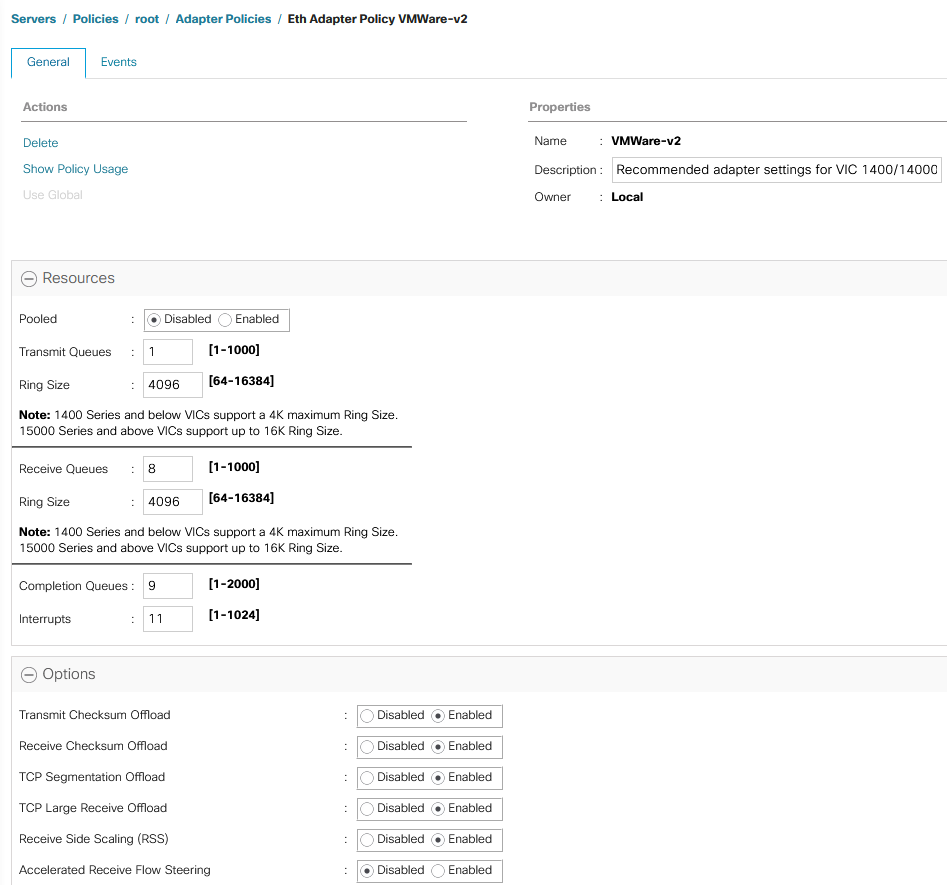Starting with Cisco UCS Manager release 4.3(4a), Cisco has introduced optimized adapter policies for Windows, Linux, and VMware operating systems, including a new policy for VMware environments called “VMware-v2.” This update affects the Cisco UCS VIC 1400, 14000, and 15000 series adapters, promising improved performance and flexibility.
This release is particularly interesting for those managing VMware infrastructures, as many organizations—including ours—have been using similar settings for years. However, one notable difference is that the default configuration in the new policy sets Interrupts to 11, while in our environment, we’ve historically set it to 12.

Key Enhancements in UCS 4.3(4a)
- Optimized Adapter Policies: The new “VMware-v2” policy is tailored to enhance performance in VMware environments, specifically for the Cisco UCS VIC 1400, 14000, and 15000 adapters. It adjusts parameters such as the number of interrupts, queue depths, and receive/transmit buffers to achieve better traffic handling and lower latency.
- Receive Side Scaling (RSS): A significant feature available on the Cisco UCS VIC series is Receive Side Scaling (RSS). RSS is crucial for servers handling large volumes of network traffic as it allows the incoming network packets to be distributed across multiple CPU cores, enabling parallel processing. This distribution improves the overall throughput and reduces bottlenecks caused by traffic being handled by a single core. In high-performance environments like VMware, this can lead to a noticeable improvement in network performance. RSS is enabled on a per-vNIC basis, meaning administrators have granular control over which virtual network interfaces benefit from the feature. Given the nature of modern server workloads, enabling RSS on vNICs handling critical traffic can substantially improve performance, particularly in environments with multiple virtual machines.
- Maximizing Ring Size: Another important recommendation for administrators using the VIC 1400 adapters is to set the ringsize to the maximum, which for these adapters is 4096. The ring size determines how much data can be queued for processing by the NIC (Network Interface Card) before being handled by the CPU. A larger ring size allows for better performance, especially when dealing with bursts of high traffic.In environments where high throughput and low latency are critical, setting the ring size to its maximum value ensures that traffic can be handled more efficiently, reducing the risk of packet drops or excessive buffering.
Links: